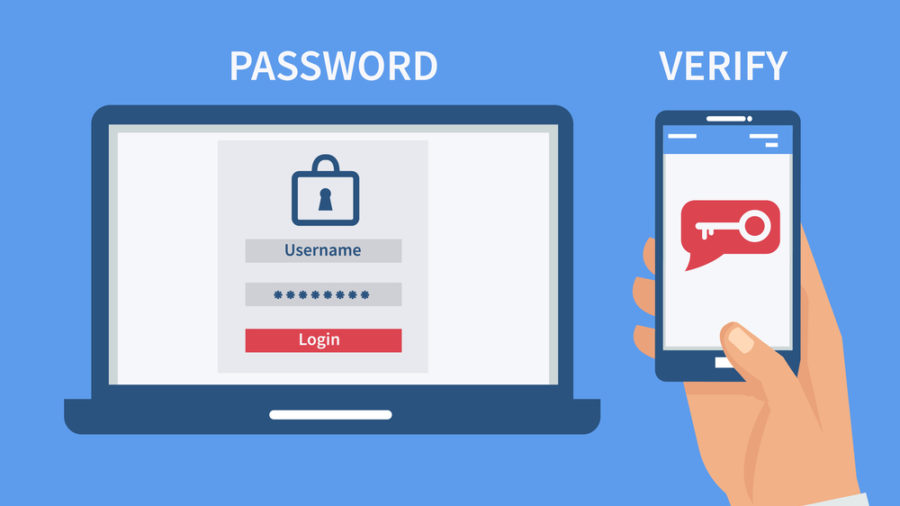The two-factor authentication technique is an identification procedure that calls for a second authentication step in the form of a push notification, security question, or SMS code delivered to a trusted device in addition to a strong password.
Nowadays, you almost certainly need a secure user account and a password to accomplish anything online. Your data and online accounts are in danger even with complex passwords. This happens due to the surge of Internet fraud and piracy. A data leak raises the issue of “when” rather than “if” it will occur.
Long lines of letters, characters, and numbers may not be enough for you to feel secure, but sophisticated passwords boost security against attackers. The ramifications of a breach and subsequent illegal access to your accounts are considerably more severe if you are also utilizing the same login information for other accounts. Additionally, fixing the issue might be expensive and time-consuming.
Cybersecurity experts advise using multi-factor authentication, which involves two or more factors to authenticate the user, to address the obligation of securing digital identities and protecting personal data.
Is 2FA authentication enough?
Businesses in all industries are at risk of a breach even with an additional authentication process. Regardless of the type or amount of data the organization works with, there is always someone who will try to steal it. Considering that there are many data breaches, it seems that 2FA authentication is not enough to protect your virtual identity, bank account, or credit score.
As an affordable and generally easy-to-use process, 2FA authentication reduces potential threats such as synthetic identity fraud, account takeover fraud, hacking, or phishing.
Still, like any other system, 2FA authentication is only as strong as its weakest link. With 2FA, hackers can’t access your data unless they also have the device you used to set it up. Of course, this means that you should always have access to that device. However, just in case, backup solutions are proposed when you activate the feature.
Why do I need two-factor authentication?
Because single authentication methods like passwords are simply not enough to stop today’s sophisticated attacks. By adding a second layer of protection, two-factor authentication makes it more difficult for hackers to access users’ devices and online accounts and steal their personal information.
With two-factor authentication enabled, even if the hacker knows their victim’s password, the authentication will still fail and prevent unauthorized access. Two-factor authentication also provides organizations with an additional level of access control to sensitive systems and data and online accounts, protecting that data from being compromised by hackers armed with stolen user passwords.
The risks are high not only for your personal information but also for the information you handle at work: once a cyber attacker breaches a personal password, they can probably escalate to even more critical information such as the company you work for. Cyber attackers typically use different tools and attack types to crack passwords:
- Phishing: This is a technique in which the victim receives fraudulent emails or notifications asking them to reveal credit card numbers, bank account information, social security numbers, passwords, or other sensitive information.
- Malicious code: Also known as malware, it is a program designed to perform malicious actions such as stealing passwords or credentials.
- Brute force: This is an attack done through a program with a “dictionary” of commonly used passwords. With it, the cyber attacker can run it until the user’s password is cracked.
The key lies in finding the right two factors
If you don’t employ the correct mix of elements, two-factor authentication systems might be insecure. Processes involving biometric elements also require dependable and secure software, whereas security token-based methods are dependent on the manufacturer’s quality. Social engineering attacks can compromise a two-factor authentication system relying on knowledge factors, such as the one-of-a-kind verification code delivered to the user’s mobile device.
By downloading the available tool, anyone may carry out these assaults. Evidence also supports the appropriateness of increasing managerial oversight of cybersecurity. No security measure is unbreakable, as demonstrated by the ease with which hackers may intercept SMS containing 2FA codes or weak passwords. However, combining the right two elements, for instance, ID and biometric verification guarantee a more layered and secure approach.
Why are strong passwords important?
In a data-driven world, passwords are the first line of defense protecting your personal and financial information from unauthorized access. Adopting good password hygiene, by using strong, unique passwords for all your accounts, will provide critical protection against fraudsters and cybercriminals who want access to your sensitive information. If you still use your favorite band or pet’s name as a password for digital platforms and services, it may be time to step up your security and adopt proper password management to protect your digital life.
In the event someone has your password and tries to get into your account, you’ll have peace of mind knowing that they can’t get in without also having your phone, which, even if you do, is likely locked and protected behind a password, or pattern.
Conclusion
Consumers are clearly and frequently threatened by hackers who get credit cards in the victim’s name and significantly damage their credit score. Because major lifestyle purchases like a car, house, and business loan are based on a credit score, this might be terrible.
Unfortunately, the password, the most basic level of authentication, is insufficient to protect your data. In conclusion, two-factor authentication may greatly reduce your risk of exposure if your password is stolen or your email account is compromised.
READ MORE: Starting Your Career as a Contractor? 9 Important Factors To Consider
